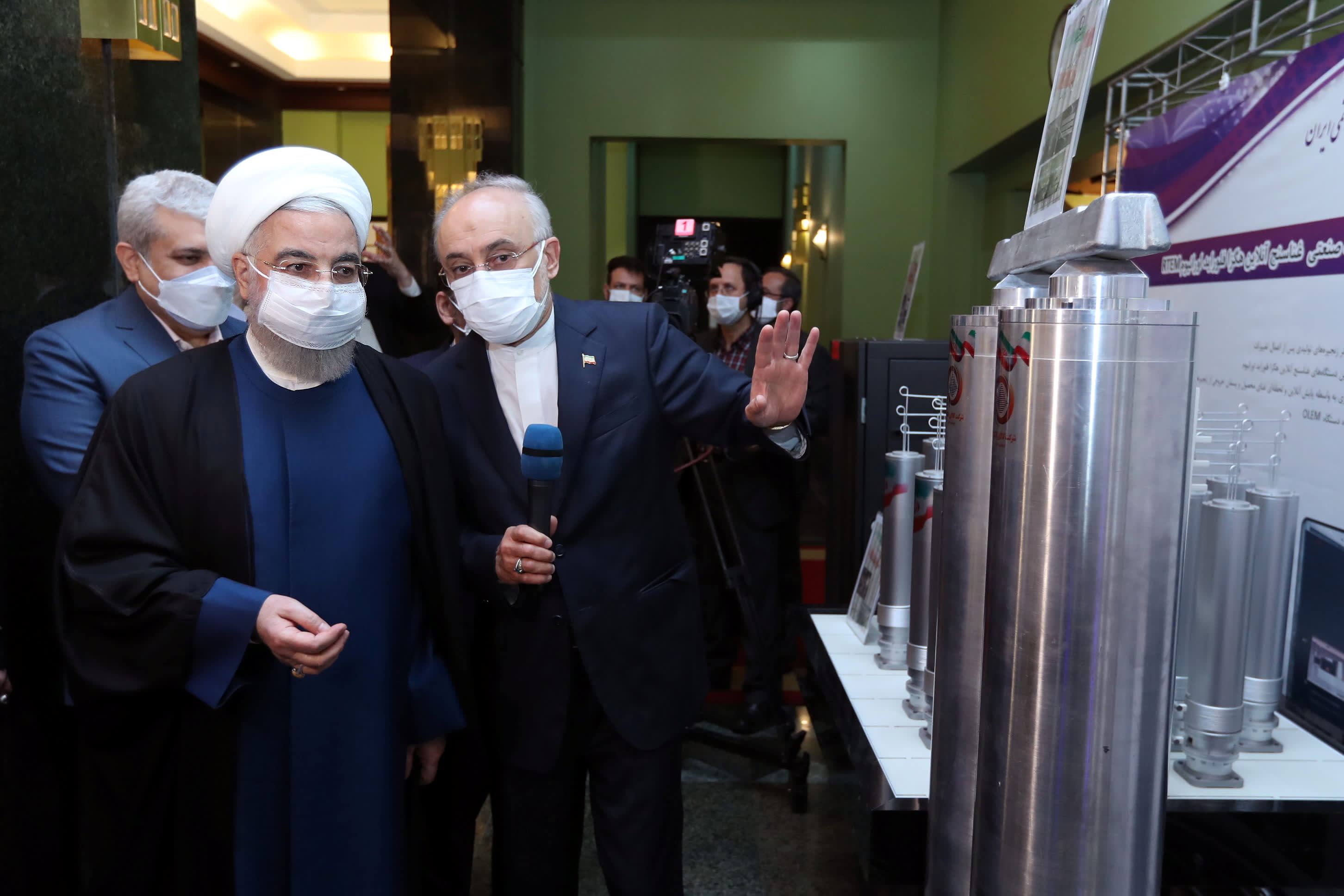Iranian President Hassan Rouhani discusses Iran’s new nuclear achievements during Iran’s National Day of Nuclear Energy in Tehran, Iran, April 10, 2021.
Office of the Iranian Presidency | RT
Iran said Saturday it has begun mechanical testing on its latest advanced nuclear centrifuge, even as the five world powers that struck a nuclear deal with Iran in 2015 are trying to get the US back into the deal.
Iran’s IR-9 centrifuge, when operational, would have the ability to separate uranium isotopes faster than the current centrifuges in use, enriching uranium at a faster rate. The announcement broadcast on state television came on Iran’s 15th annual “Nuclear Day”.
The output of the IR-9 is 50 times faster than that of the first Iranian centrifuge, the IR-1. The country also announced that it has launched a chain of 164 IR-6 centrifuges on Saturday and that it is also developing IR-8 centrifuges.
Since January, Iran has begun to enrich uranium to a purity of 20%, a technical step away from the level of weapons quality, although Iran’s leadership insists the country has no desire to develop a nuclear weapon.
Former US President Donald Trump pulled the US out of the nuclear deal in 2018, accusing Iran of not complying with the agreement and opting for what he called a maximum pressure campaign of heightened US sanctions and other harsh actions.
Iran responded by stepping up its uranium enrichment and building centrifuges in clear violation of the accord, while insisting that its nuclear development is for civil rather than military purposes.
Israel still maintains Iran’s ambition to develop nuclear weapons, noting Tehran’s ballistic missile program and researching other technologies.
Iran denies it is pursuing nuclear weapons and says its nuclear program is for peaceful purposes.
Iran’s supply of 20% enriched uranium has reached 55 kilograms (121 pounds), bringing the nuclear program closer to weapon-quality enrichment levels. The amount of material was 17 kilograms in January.
Iran has installed 1,000 IR2 centrifuge machines and one cascade of 164 IR4 machines. Both are in operation and have more speed than the IR1 machines.
As of late February, Iran no longer adheres to a confidential agreement with the UN nuclear watchdog reached as part of the groundbreaking 2015 nuclear deal. The International Atomic Energy Agency has additional protocols with several countries it controls.
Under its protocol with Iran, the IAEA collects and analyzes “hundreds of thousands of images captured daily by its advanced surveillance cameras,” the agency said in 2017. The agency also said it had “placed 2,000 tamper-resistant seals on nuclear material and equipment.”
However, the Iranian parliament passed a bill in December requiring the government to limit its cooperation with the IAEA and push its nuclear program beyond the limits of the 2015 nuclear deal. After the bill became law, Iran began enriching uranium to 20% purity and spinning advanced centrifuges – both ruled out by the deal.
Iran argues that the US departure from the nuclear deal was the first violation of the deal by either provinces and that the US must therefore take the first step and lift sanctions before Iran is compliant again.
President Joe Biden took office saying it was a priority to get back into agreement and bring Iran’s nuclear program back under international restrictions. But Iran and the United States disagree on Iran’s demands to lift sanctions first. That deadlock threatened to become an early foreign policy setback for the new US president.
Talks in Vienna aimed at bringing the US back into the deal with Iran broke out on Friday with no immediate signs of progress on issues dividing Washington and Tehran.
However, the delegates spoke of a constructive atmosphere and decided to continue the talks.
